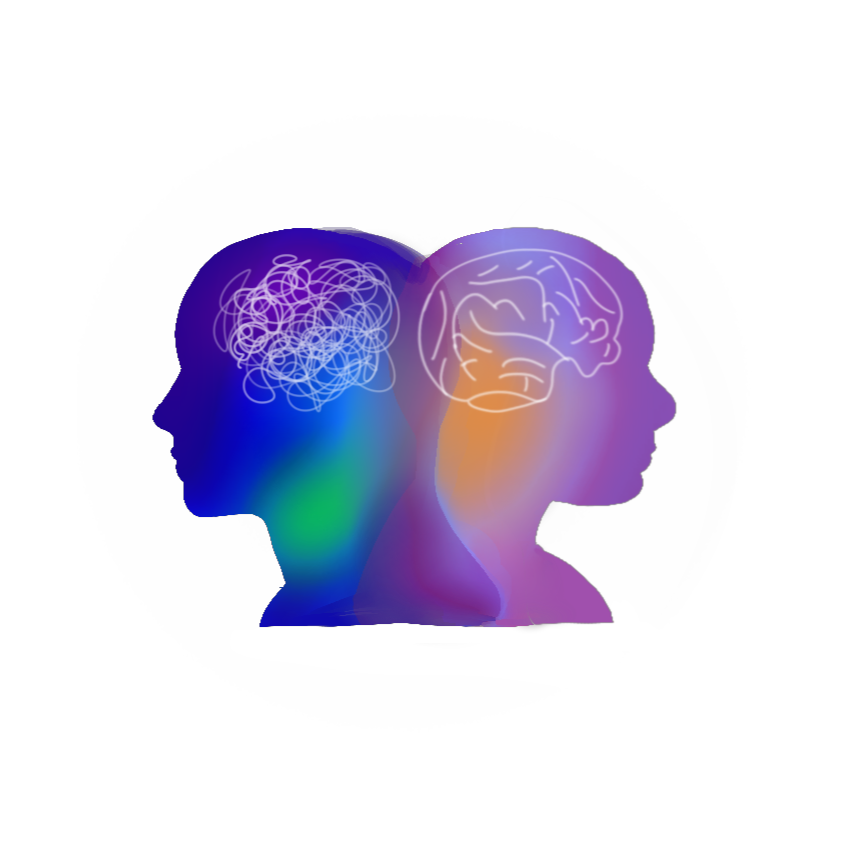Bipolar
Understanding Bipolar is the first step towards treatment and recovery. Learn more below.
The phrase "bipolar" often gets thrown around loosely in conversation.
People sometimes equate the ups and downs of everyday life to this serious mental health condition. They might feel glum after facing a setback, and then cheerful when something pleasant happens, and label these mood swings as being bipolar.
But for you, living with bipolar symptoms can feel like riding the wildest never-ending roller coaster you didn’t sign up for.
One minute, you’re on top of the world. You see things in bright colors, feel super excited, and think you can do a million things at once without much sleep at all.
But then, suddenly, it feels like falling into a deep, dark hole. You feel so down that you don’t even want to get out of bed. Everything about life seems hopeless and too hard and it’s not just feeling sad; it’s an intense feeling of heaviness like gravity crushing down on you.
The high part, the mania, can sometimes feel great, but it can also quickly turn scary. You might become overly anxious, start having paranoid thoughts, struggle to think clearly, and things can spiral out of control before you know it.
And the worst part? This roller coaster of dizzying highs and plunging lows repeats in cycles, lasting for days to months, with no warning of the next turn. It’s a relentless ride that often leaves you wondering: when was the last time you felt like you were steering the roller coaster, rather than being tossed around by its highs and lows? A time when you had lasting control over the ride of your emotions and actions?
Living with Bipolar is hard, and it’s not something people can just snap out of. It’s a real deal, beyond feeling sad or happy.
However, understanding the complexities of bipolar disorder, seeking professional help, and building a support system are all crucial steps towards managing this condition. It’s a journey with its share of challenges, but with the right support and treatment, achieving balance and control is possible.
It's a journey with its share of challenges, but with the right support and treatment, achieving balance and control is possible.

Symptoms of Bipolar

You might experience deep lows or extreme highs
Bipolar has two main types. Bipolar I involves at least one intense manic episode, possibly followed by milder hypomanic or major depressive episodes. Mania in Bipolar I may lead to a disconnection from reality (psychosis). In Bipolar II, you might experience at least one major depressive episode and one hypomanic episode, but not full manic episodes. It’s important to understand that Bipolar II is not a milder form of Bipolar I, but a diffrent diagnosis. Bipolar I is characterized by severe manic episodes, while Bipolar II often involves longer depressive episodes. Both types present unique, significant challenges. Mania and hypomania are periods of high energy, with mania being more severe and significantly affecting areas like work and relationships. Symptoms include feeling extremely upbeat or anxious, increased activity, heightened self-confidence, needing less sleep, talking more, racing thoughts, being easily distracted, and making impulsive, risky decisions.
Major depressive episodes can make everyday tough. causing persistent sadness, loss of interest in enjoyable activities, changes in appetite and sleep, fatigue, feelings of worthlessness, difficulty concentrating, and possibly suicidal thoughts. This represents a notable change from one’s usual mood.
Bipolar disorder symptoms can vary, changing with seasons or life events like pregnancy. Diagnosing bipolar disorder in kids and teens is particularly challenging, as their mood patterns often differ from adults. Rapid mood changes and periods of normal mood can occur, and significant, unusual mood swings are a key indicator.
Treatment for Bipolar

Treatment starts with diagnosing. Getting help can be life changing.
Treatment starts with a diagnosis. If you think you or a loved one might have bipolar disorder, getting help can be life-changing. Often, people don’t realize how much their mood swings affect their lives and those around them. Sure, the high times can feel good and productive, but they usually end up in low times that can cause problems with money, the law, or relationships. Although Bipolar is a lifelong condition, you can manage the mood swings and other symptoms with the right treatment, like medication and therapy.
Getting a diagnosis for a child or adult bipolar disorder can involve a comprehensive evaluation to rule out any other condition and determine the specific type of bipolar disorder and the most effective treatment approach.
Treatment for bipolar disorder often includes a combination of medications and psychotherapy. The medications are tailored to stabilize and improve mood, control manic or hypomanic episodes, prevent psychosis, reduce anxiety, and improve sleep. It’s really important to work together with your clinician to make sure that your treatment plan is safe and effective for you.
Psychotherapy is also a key part of treatment. It provides support and counseling to help manage symptoms. The goal of therapy is to help develop routines, coping skills, and address learning and social challenges. It also aims to strengthen family relationships. By understanding your condition and building a strong support network, you can learn to effectively control and manage it.
Care at Godaelli
At Godaelli Psychiatric, we believe in treating the whole person, not just the symptoms.
Overcome Bipolar Disorder: Together, we’ll navigate from emotional extremes to balanced stability.
